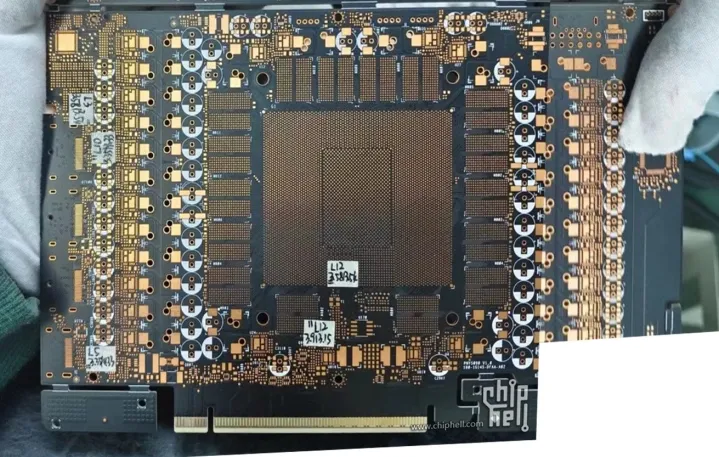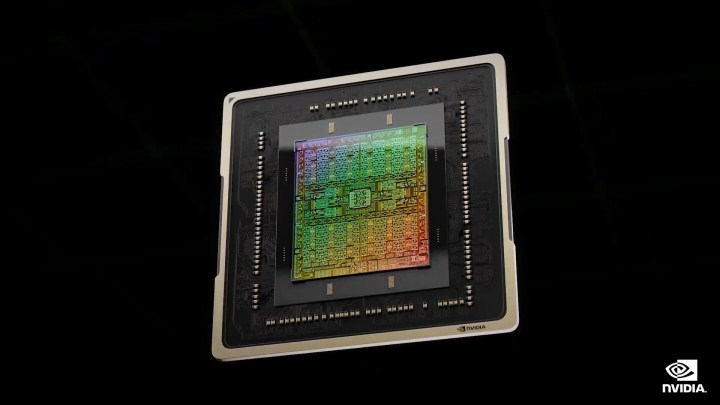Nvidia has announced its new line of GPUs, the RTX 50-series. That includes four new graphics cards: the RTX 5090, RTX 5080, RTX 5070 Ti, and RTX 5070. They’re nearly as insane in price and power as the rumors suggested. Nvidia is promising some huge leaps in performance, thanks to the new AI powers of DLSS 4.
Here’s everything we know so far.
RTX 50-series: pricing and release date

To say there was speculation about the price of the RTX 50-series is a serious understatement. Well, the leaks and rumors can finally come to an end. Here are the prices of upcoming GPUs:
- RTX 509:- $1,999
- RTX 5080: $999
- RTX 5070 Ti: $749
- RTX 5070: $549
That’s a $400 increase on the top end, up from the $1,599 for the RTX 4090, which was already the most expensive Nvidia GPU ever made. That price jump is definitely an eyebrow-raiser, but further down the stack, the pricing actually isn’t bad.
The RTX 5080 matches the price of the RTX 4080 (or RTX 4080 Super), for example. Meanwhile, the RTX 5070 Ti and RTX 5070 are actually $50 cheaper than the RTX 4070 Ti and RTX 4070. How’s that for a surprise?
The RTX 5090 and 5080 both launch on January 30. The RTX 5070 Ti and 5070, meanwhile, will follow sometime in February.
RTX 50-series: specs
| RTX 5090 | RTX 5080 | RTX 5070 Ti | RTX 5070 | |
| Architecture | Blackwell | Blackwell | Blackwell | Blackwell |
| CUDA cores | 21760 | 10752 | 8960 | 6140 |
| Tensor cores | 5th-gen 3352 TOPS | 5th-gen 1801 TOPS | 5th-gen 1406 TOPS | 5th-gen 988 TOPS |
| Ray tracing cores | 4th-gen 318 TFLOPS | 4th-gen 171 TFLOPS | 4th-gen 133 TFLOPS | 4th-gen 94 TFLOPS |
| Boost clock (GHz) | 2.41 | 2.62 | 2.45 | 2.51 |
| Base clock (GHz) | 2.01 | 2.30 | 2.30 | 2.16 |
| Max resolution | 4K at 480Hz or 8K at 120Hz | 4K at 480Hz or 8K at 120Hz | 4K at 480Hz or 8K at 120Hz | 4K at 480Hz or 8K at 120Hz |
| Memory interface width | 512-bit | 256-bit | 256-bit | 192-bit |
| Memory | 32GB GDDR7 | 16GB GDDR7 | 16GB GDDR7 | 12GB GDDR7 |
| TOPS | 3,400 | 1,800 | 1,400 | 1,000 |
| TGP (watts) | 575 | 360 | 300 | 250 |
| Required system power (watts) | 1000 | 850 | 750 | 650 |
| Price | $1,999 | $999 | $749 | $549 |
There’s a lot to take in here. We also know that the cards will all use a 16-pin connector and DisplayPort 2.1, which is where the support for 8K resolutions at 120Hz comes from.
While we have the official specs, there’s a few more details that we likely won’t have confirmed until reviewers get their hands on the cards.
However, piecing together speculation from various hardware leakers gives us some idea of what we can expect. Remember to take the following with a healthy dose of skepticism until we learn more.
Process node, PCB, and GPU
TSMC3
— kopite7kimi (@kopite7kimi) November 15, 2023
We know for a fact that the follow-up to Ada Lovelace will be called Blackwell, honoring American mathematician David Blackwell. Rumor has it that it will be manufactured by TSMC based on a 3nm process, but it’s unclear whether Nvidia will be using one of TSMC’s existing 3nm nodes or a custom node.
The release of the Blackwell B200 GPU threw a wrench into the 3nm rumor. The B200, made for high-performance computing (HPC) and data center use cases, is built on a TSMC 4NP (4nm Nvidia Performance) node. If the B200 uses a 4NP node, it’s easy to imagine that the consumer lineup might do the same. However, it’s not a given — Nvidia might use the 3nm node for its RTX 50 lineup instead.
The lineup is said to include chips spanning from the high-end, RTX 4090-equivalent GB202 through the GB203, GB205, GB206, and entry-level GB207. This will be an interesting, perhaps worrying, change if proven true. It would mean that the AD104 GPU powering the RTX 4070 would have no successor in the next generation. The RTX 5070 and RTX 5070 Ti might, therefore, utilize the GB205 chip.
One of the most talkative sources of information on the RTX 50-series has been kopite7kimi on X (formerly Twitter). The leaker revealed that we can expect the new GPUs to feature support for DisplayPort 2.1, something that the Lovelace lineup doesn’t provide, and also for HDMI 2.1.

We recently got a glimpse of the GB202-300 GPU, which is said to power the RTX 5090. It was leaked on Baidu by someone who most likely received an early engineering sample; the finding was later shared by harukaze5719 on X. That same person had also leaked the PCB a day before, spotted by VideoCardz and HXL on Twitter. Let’s dissect the two, as they both give us some insight into the specs of Nvidia’s latest halo card.

The first thing we can see is the massive die size of the GB202-300 GPU, which is expected to feature 21,760 CUDA cores. According to the source, the package size measures approximately 63 x 56 mm, and the die itself — 24 x 21 mm. This adds up to a total die area of 744 mm²; this is a huge increase over Ada’s AD102, which measured 608 mm².
The die size might be larger than what we’ll find in Nvidia’s Founders Edition, though, so that gap might be smaller. VideoCardz suspects that this is a PNY GPU, although it uses the PG145 board, which belongs to Nvidia’s reference design. If it is a third-party card, that might explain the large printed circuit board (PCB).
Aside from the GB202-300 GPU, this is also our first glimpse at the VRAM that Nvidia is using this generation: Samsung’s GDDR7. Rumor has it that the RTX 5090 will feature 28Gbps memory modules, and each module will offer 2GB of VRAM. As there are 16 modules in total, this — once again — confirms that the flagship will have 32GB VRAM, which is a record for Nvidia’s consumer GPUs — and has since been confirmed.
The PCB itself only has one power connector, which most likely means the 12V-6ˣ2. The GPU uses the PCIe 5.0 interface, and this also aligns with many previous leaks.
Design

| RTX 5090 | RTX 5080 | RTX 5070 Ti | RTX 5070 | |
| Length | 304mm | 304mm | Varies | 242mm |
| Width | 137mm | 137mm | Varies | 112mm |
| Slot | 2-slot | 2-slot | Varies | 2-slot |
| Power connector | 4x PCIe 8-pin cables or 1x 600 W PCIe Gen 5 cable | 3x PCIe 8-pin cables or 1x 450 W or greater PCIe Gen 5 cable | 2x PCIe 8-pin cables or 300 W or greater PCIe Gen 5 cable | 2x PCIe 8-pin cables or 300 W or greater PCIe Gen 5 cable |
The Founders Edition RTX 5090 might be the biggest surprise with its 2-slot design. In fact, the RTX 5090 and 5080 are the exact same size, much like the bigger RTX 4080 and 4090. The new design still uses two fans, but they’re now on the same side, unlike the previous generation, which used a dual axial flow design.
Like in prior years, there is no Founders Edition of the RTX 5070 Ti.
Of course, board partners will no doubt make much larger versions of these cards that take up more than two slots.
RTX 50-series: architecture

Nvidia is keeping the architecture used in Blackwell chips hush-hush, but it won’t stay that way much longer. With the GPUs less than a month away, we’ll learn more as the release date draws closer. For the time being, Nvidia talked about the architecture for its data center Blackwell GPUs, which may not be very indicative of what could happen in the consumer lineup — but there are still some interesting tidbits.
The first curious part is that the enterprise version of Blackwell is built on TSMC’s 4NP node, which is actually a 5nm process. Previous rumors indicated that the RTX 50-series might be built on a 3nm process, but that now seems quite unlikely, given the recent announcement. Moreover, the B200 GPU comes with a dedicated decompression engine. While there’s no telling if that will make it to the consumer GPUs, it could bring a major boost to the graphics cards.
Although Nvidia discussed the Blackwell architecture in relation to enterprises, it stayed silent on its consumer lineup. As a result, all we have is more speculation from various sources, but the information is often somewhat conflicting.
RedGamingTech talked about the Blackwell architecture at length in a recent video. The YouTuber referred to it as “one of the most influential graphics architectures,” predicting that the RTX 50-series will introduce significant improvements to things like path tracing and ray tracing, offering gains for both enthusiast-grade and midrange cards.
To that end, the YouTuber said we might see significant architectural changes, including a major redesign of Nvidia’s SMs. He also mentioned the addition of a denoising accelerator, either as a part of the chip or as a function of Nvidia’s Tensor cores. More importantly, RedGamingTech initially teased that Nvidia may use a multi-chip module (MCM) design. This means a design approach where multiple smaller chips are packaged together to form a single, larger, and more powerful processor.
Switching to an MCM design over monolithic could give Nvidia a major edge, including scalability, higher yields, and more design flexibility. No other leakers have agreed with these two theories so far.
Unfortunately, a recent update from the same YouTuber revealed that Nvidia won’t be using an MCM design in Blackwell. Reportedly, Nvidia initially planned to use dual GB202 dies glued together, possibly with some SMs cut, but ultimately decided against it. The YouTuber remarked that issues such as high prices, the latency between the two dies, and various difficulties in getting it to work made Nvidia stick to its previous architecture.
Take this with a healthy dose of skepticism. It’s possible that Nvidia may be planning to switch to MCM in the future, but such architectural changes are never made last minute, so that plan for Blackwell may have never existed. However, it’s also possible that Nvidia may introduce architectural changes instead of pushing for top performance to allow the new technology to mature before ramping up the performance in RTX 6000-series graphics cards a few years from now.
One small hint of what to expect comes from, once again, the B200 data center GPU. Nvidia reworked its Tensor cores in that graphics card. As a result, they now support FP4 and FP6 numerical formats for AI inference natively. We might see this happen in consumer GPUs too, but it’s all speculation at this point.
Although Blackwell is still so new, it’s already seen its fair share of troubles. A recent report from The Information tells us that Nvidia’s data center GPUs are running into problems with overheating, which has resulted in delays in the deployment of server racks used for AI training. Seeing as Blackwell has already been delayed due to “design flaws,” this is a rocky start, but it’s possible that these problems will never appear in consumer graphics cards as both are built differently.
RTX 50-series: performance
Nvidia made some significant claims about the performance of these new 50-series cards, saying they double the performance of their predecessors. As you can see in the slides above, that includes games, yes, but also AI and creative applications. The only direct comparison Nvidia made was for the RTX 5070, which it claims is now on par with the RTX 4090.
That sounds like quite a leap, but remember: it’s done on the back DLSS 4’s multi-frame generation feature. Most of Nvidia’s performance claims and graphs include DLSS 4, so it’s difficult to know exactly what the performance delta is when it comes to pure rendering.






















































